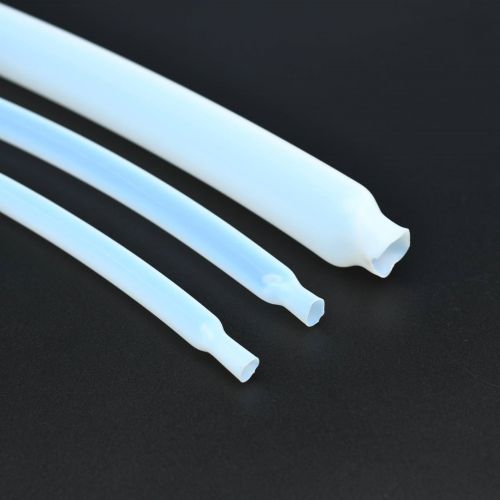What Is PTFE Heat Shrink Tubing and How Does It Work?
PTFE heat shrink tubing is a high-performance material used to protect and insulate components in environments where extreme heat, chemical exposure, or mechanical stress is present. PTFE stands for Polytetrafluoroethylene, a fluoropolymer known for its exceptional resistance to heat, chemicals, and electrical stress. Heat shrink tubing made from PTFE combines these properties with the ability to shrink tightly around wires, probes, or other components when heated, offering secure protection in critical applications.

PTFE heat shrink tubing differs from standard heat shrink materials like polyolefin in several ways. It can operate in continuous high temperatures up to 260°C, and it maintains its integrity even when exposed to aggressive chemicals, oils, acids, or solvents. This makes it especially suitable for demanding industries such as aerospace, medical devices, electronics, automotive, and chemical processing.
The working principle behind PTFE heat shrink tubing relies on its memory of the original, smaller size. During production, the tubing is expanded at high temperatures and rapidly cooled to freeze it in an enlarged shape. When the tubing is reheated during installation, it returns to its original diameter, shrinking tightly around the object it covers. This heat-activated recovery allows for precise and secure encapsulation of complex shapes or sensitive components.
PTFE heat shrink tubing typically comes in standard shrink ratios such as 2:1 or 4:1. This means the tubing can shrink to half or one-quarter of its expanded diameter, providing excellent coverage and fit over uneven surfaces or irregular parts. Due to the high shrink temperature, which is usually over 327°C, proper tools such as industrial heat guns or ovens are needed during installation. Heating must be uniform to avoid uneven shrinkage or damage to the component being covered.
One of the most important advantages of PTFE heat shrink tubing is its chemical inertness. It is non-reactive with most substances, including acids, alkalis, fuels, and solvents. In medical and laboratory applications, this makes PTFE ideal for sealing or protecting devices exposed to sterilization processes or chemical reagents. In the electronics industry, PTFE provides excellent insulation for wires, connectors, and sensitive sensors operating in high-temperature zones.
Despite its advantages, there are a few considerations when using PTFE heat shrink tubing. It tends to be more expensive than conventional shrink tubing, and its installation process requires more care due to the high temperatures involved. Once shrunk, PTFE becomes more rigid compared to other materials, which may be a factor in applications requiring flexibility after installation.
In summary, PTFE heat shrink tubing is a specialized solution for high-reliability applications where standard materials may fail. Its ability to withstand heat, chemicals, and electrical stress makes it a preferred choice for engineers and manufacturers working in challenging environments. When durability and performance are critical, PTFE heat shrink tubing offers a dependable way to insulate, protect, and extend the life of valuable components.




